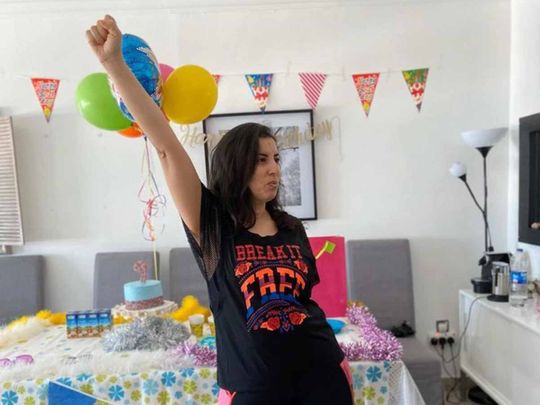
Abu Dhabi: Asma, a 41-year-old Zumba instructor, was attending a fitness class in Abu Dhabi in 2017 when she began experiencing chest pains and shortness of breath.
“I was attending a morning class, something I don’t normally do. Suddenly, I had chest pains and difficulty breathing. Noticing how pale I was, people suggested I might be experiencing low blood sugar since I hadn’t eaten any breakfast. After a while, the symptoms passed and as I felt fine and I didn’t think any more about it,” she said.
A few months later, Asma began experiencing the same symptoms again. Her heart began racing and she felt she couldn’t breathe. As she had not been exercising like the previous incident, she grew more concerned and rushed to CCAD’s Emergency Department. Upon arrival, caregivers immediately realised the seriousness of her situation and began working to reduce her racing heart rate and stabilise her. Once Asma had recovered from the episode, she was told to follow up with a cardiologist as soon as possible.
Physicians at the Abu Dhabi-based Cleveland Clinic Abu Dhabi (CCAD) highlight the case for a reason. Like this Abu Dhabi resident and fitness instructor, there could be others whose cardiac conditions appear unexpectedly. In fact a survey conducted by the Cleveland Clinic Abu Dhabi in 2019 found a significant lack of awareness of risk factors and symptoms of heart disease that are unique to women.
In Asma’s case, she was diagnosed as having experienced supraventricular tachycardia, a condition that can cause the heart to beat over 200 times per minute. In contrast, a healthy adult’s heart rate typically ranges from 60 to 100 beats per minute.
Asma was given medication to slow her heart rate, which she could take if she experienced another episode. “I thought that maybe it would be something I’d just live with since it didn’t seem to be dangerous. A few months later, I had another episode at home but after taking the medication it went away quickly. However, unlike the first times, my heart felt different afterwards, like it didn’t keep a regular beat anymore,” she said.
Arrhythmia is treatable
Given the change in her symptoms, Asma was referred to an electrophysiologist who diagnosed her with a form of arrhythmia called AV Nodal Re-entry Tachycardia (AVNRT). Her rapid heartbeat was being caused by an electrical loop in a specific part of her heart, an abnormality that is three times more common in women than men.
“As a fitness instructor who takes care to live a healthy life, Asma doesn’t fit the classic picture of a heart disease patient. However, it’s important that people realise that arrhythmia can affect anybody of any age with some forms affecting women more often than men. Fortunately, these conditions are treatable with a safe and quick procedure that completely cures it,” said Dr. Mohamed Al Jaabari, an electrophysiologist at CCAD.
Minimally invasive procedure
Given her new diagnosis, Asma was a candidate for a minimally invasive ablation procedure to correct the part of her heart causing the errant signals and cure her condition. However, it would be more than a year before she agreed to undergo the procedure.
“I have to admit I was scared at the prospect but to be honest, I didn’t feel anything during or after the surgery. I was back to teaching classes just a couple of weeks later and I don’t have the constant worry I did before. My life changed completely since the procedure. I have friends with the same condition who are still scared but it is the best decision I’ve made, and I encourage others to do the same,” she said.
Take small steps
The CCAD is encouraging people to take small steps for a healthier heart with a new awareness campaign, ‘What makes your heart beat?’ Residents can find more information about cardiovascular disease, risk factors, treatment options and tips to lead a healthy lifestyle on heartbeat.clevelandclinicabudhabi.ae.









